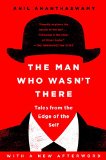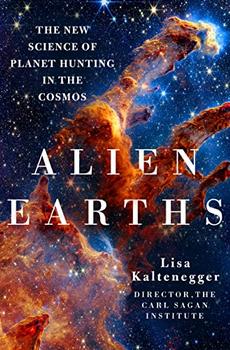Summary | Excerpt | Reviews | Beyond the Book | Readalikes | Genres & Themes | Author Bio
Investigations into the Strange New Science of the Self

Critics' Opinion:
Readers' Opinion:
First Published:
Aug 2015, 320 pages
Paperback:
Aug 2016, 320 pages
 Book Reviewed by:
Book Reviewed by:
James Broderick
Buy This Book
An allegory about a man who was devoured by ogres first appears in an ancient Indian Buddhist text of the Madhyamika (the middle-way) tradition. It dates from sometime between 150 and 250 CE and is a somewhat gruesome illustration of the Buddhist notion of the true nature of the self.
A man on a long journey to a distant land finds a deserted house and decides to rest for the night. At midnight, an ogre turns up carrying a corpse. He sets the corpse down next to the man. Soon, another ogre in pursuit of the first arrives at the deserted house. The two ogres begin bickering over the corpse. Each claims to have brought the dead man to the house and wants ownership of it. Unable to resolve their dispute, they turn to the man who saw them come in, and ask him to adjudicate. They want an answer. Who brought the corpse to the house?
The man, realizing the futility of lying to the ogres—for if one won't kill him, the other one will—tells the truth: the first ogre came with the corpse, he says. The angry second ogre retaliates by ripping off the man's arm. What ensues gives the allegory its macabre twist. The first ogre immediately detaches an arm from the corpse and attaches it to the man. And so it goes: the second ogre rips a body part off the man; the first ogre replaces it by taking the same body part from the corpse and attaching it to the man. They end up swapping everything—arms, legs, the torso, and even the head. Finally, the two ogres make a meal of the corpse, wipe their mouths clean, and leave.
The man, whom the ogres have left behind, is extremely disturbed. He is left pondering what he has witnessed. The body that he was born in has been eaten by the ogres. His body now is made up of body parts of someone else entirely. Does he now have a body or doesn't he? If the answer is yes, is it his body or someone else's? If the answer is no, then what is he to make of the body that he can see?
The next morning, the man sets off on the road, in a state of utter confusion. He finally meets a group of Buddhist monks. He has a burning question for them: does he exist or does he not? The monks throw the question back at him: who are you? The man is not sure how to answer the question. He's not sure he's even a person, he says—and tells the monks of his harrowing encounter with the ogres.
What would modern neuroscientists tell the man if he were to ask them Who am I? While some would likely point out the near-biological implausibility of what the ogres did, they would nonetheless have some tantalizing answers. These answers, which strive to illuminate the "I," are the focus of this book.
1
WHO IS THE ONE WHO SAYS, "I DON'T EXIST"?
Men ought to know that from the brain, and from the brain only, arise our pleasures, joys, laughters and jests, as well as our sorrows, pains, griefs and tears. . . . These things that we suffer all come from the brain. . . . Madness comes from its moistness.
—Hippocrates
If I try to seize this self of which I feel sure, if I try to define and to summarize it, it is nothing but water slipping through my fingers.
—Albert Camus
Adam Zeman will never forget the phone call. It was, as he called it, a "Monty Python–esque" summons from a psychiatrist, asking him to come urgently to the psychiatric ward. There was a patient who was claiming to be brain dead. Zeman felt as if he were being called to the intensive care unit, not the psychiatric ward. Yet, "this was very unlike the kind of call you normally receive from the ICU," Zeman told me.
The patient, Graham, was a forty-eight-year-old man. Following a separation from his second wife, Graham had become deeply depressed and had tried to kill himself. He got into his bath and pulled an electric heater into the bathwater, wanting to electrocute himself. Fortunately, the fuse blew and Graham was spared. "It didn't seem to have done any physical damage to him, but some weeks later he formed the belief that his brain had died," said Zeman, a neurologist at the University of Exeter in the UK.
Excerpted from The Man Who Wasn't There by Anil Ananthaswamy. Copyright © 2015 by Anil Ananthaswamy. Excerpted by permission of Dutton. All rights reserved. No part of this excerpt may be reproduced or reprinted without permission in writing from the publisher.





The House on Biscayne Bay
by Chanel Cleeton
As death stalks a gothic mansion in Miami, the lives of two women intertwine as the past and present collide.

The Flower Sisters
by Michelle Collins Anderson
From the new Fannie Flagg of the Ozarks, a richly-woven story of family, forgiveness, and reinvention.

The Funeral Cryer by Wenyan Lu
Debut novelist Wenyan Lu brings us this witty yet profound story about one woman's midlife reawakening in contemporary rural China.
Your guide toexceptional books
BookBrowse seeks out and recommends the best in contemporary fiction and nonfiction—books that not only engage and entertain but also deepen our understanding of ourselves and the world around us.